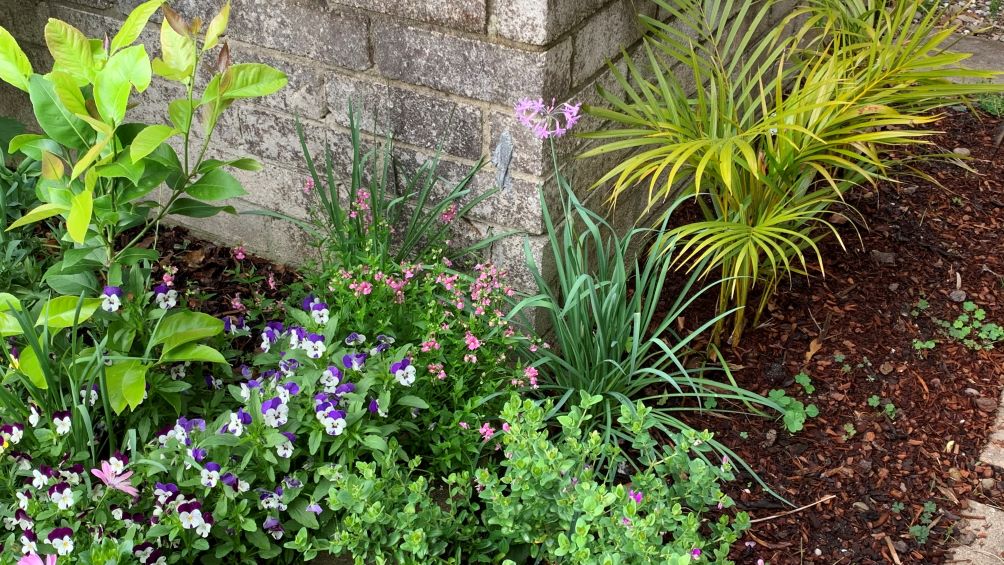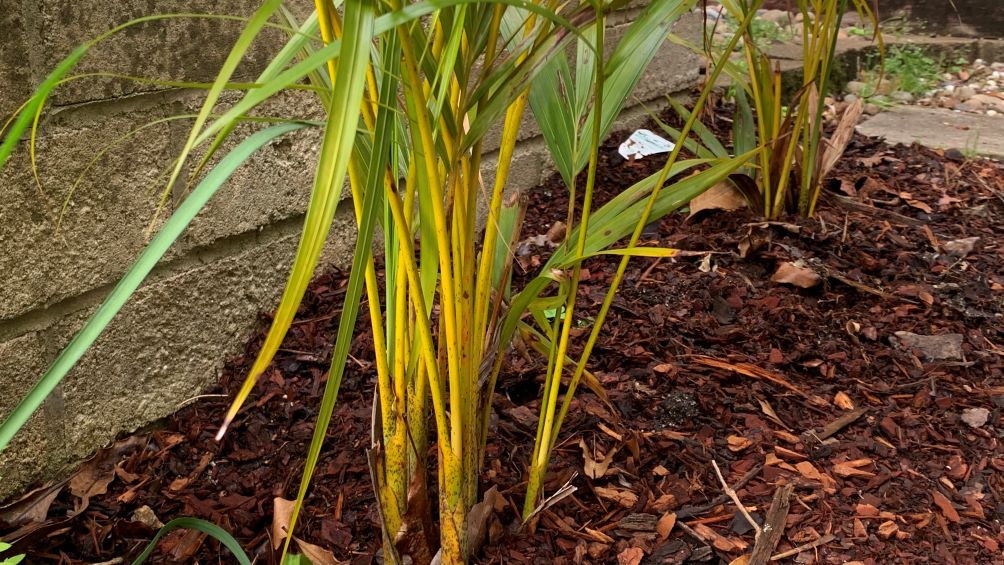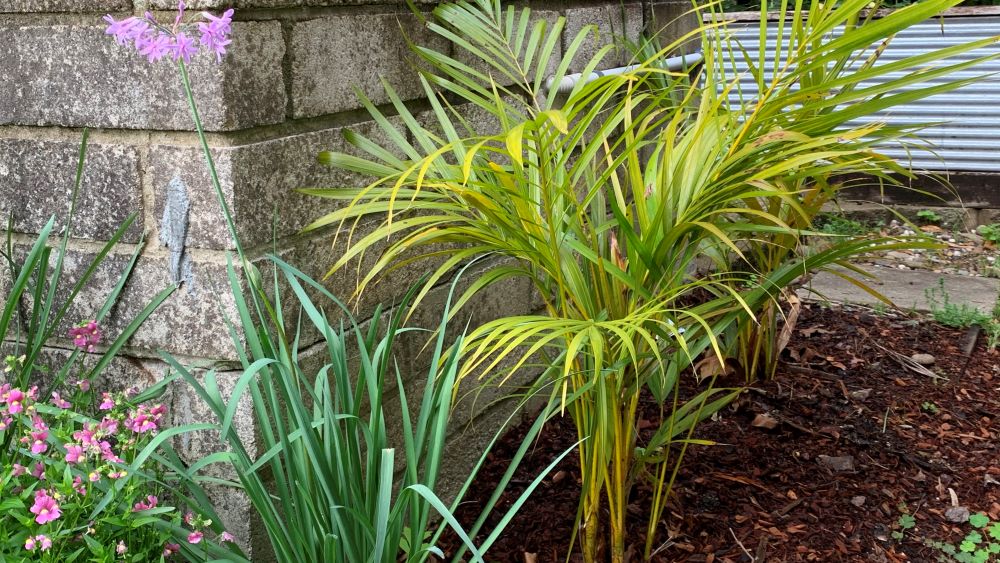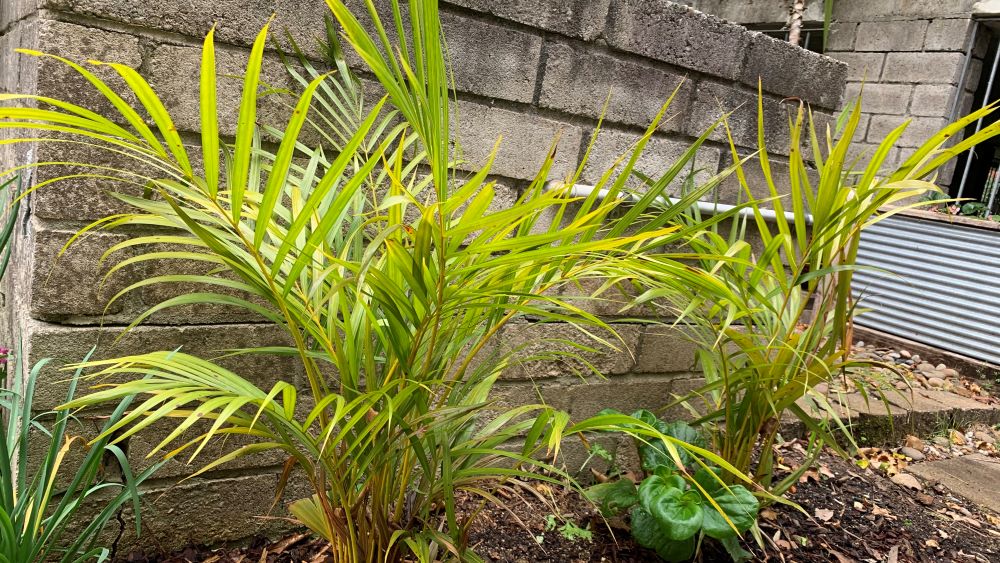A golden cane palm will turn brown because of underwatering, overwatering, very cold weather or a lack of nutrients. Cold weather and cold winds can turn the leaves of your golden cane palm brown and these leaves should be trimmed off at the end of the winter season.
Checking water levels is also another important step as both underwatering and overwatering can cause brown leaves.

The solution is to water them regularly but allow the topsoil to dry out between watering and give them an organic liquid feed. If you grow your golden cane palm outside, mulch the area so that the soil will not dry out as quickly. This will help to stop your golden cane palm from turning brown.
How to fix brown golden cane palms

1. Cut off the brown Golden Cane Palm palm leaves
If your golden cane palm has a few brown leaves, you can cut them off close to the stem. Once the leaves have gone brown, they won’t grow back green. If you cut them back, this will encourage the plant to grow new leaves and will give the rest of the leaves with more light.
Cutting off the brown palm leaves is a good idea before you add some organic fertilizer.
How to fertilize a golden cane palm organically
I like to fertilize all of my plants with organic fish emulsion which is a liquid fertilizer. Follow the pack instructions and give this to your palm at least in the warm growing season in spring and again in fall. As this is a mild fertilizer you can add it more regularly if you want to encourage good leaf growth.

If you want a longer lasting fertilizer, add some pelletized chicken manure. This is a great fertilizer that will release slowly over time as the plant is watered. Before I planted my golden cane palms into my garden, I added some aged cow manure to the soil first so they had some extra nutrients to encourage growth.

If you are lucky enough to have a worm farm, you can add diluted “worm juice” which is the water that comes out of the worm farm as it drains through the soil. Just add water to the worm juice in a bucker or watering can until it looks like the color of weak tea and add it to your palm leaves and at the base.
Adding worm castings to your golden cane palm is a great idea. Worm castings are formed in your worm farm as your worms turn your vegetable scraps into soil. Scrape this out of your worm farm and add it to the topsoil near your palms or dig it into the soil before you plant them out.

How often to water golden cane palms
Golden cane palms come from a Madagascar so like regular watering. They hate to have wet roots however so let the topsoil dry out first before adding more water to your golden cane palm. When you can stick your finger into the soil up to the first knuckle and the soil feels dry, give your palm a good water.
Depending on the weather they may need watering every few days or not at all. The best way to know is to test the soil with your finger. Otherwise you could be over or underwatering your palm without knowing.
Why golden cane palms turn yellow
Golden cane palms have naturally yellow stems however if the leaves of your palm start to turn yellow, you may have a problem. If the tips of the leaves on your golden cane palm turn yellow, it might not be getting enough nutrients such as nitrogen.
This is easily fixed by adding a natural organic fertilizer in either liquid or pelletized form. I like to add liquid fertilizer as it works quicker.

The best thing about organic fertilizer is that in contains a range of nutrients in small amounts. That way the palm will be able to take up the nutrients it needs. Applying the fertilizer regularly will give your palm the chance to take up small amounts of the nutrients it needs it.
Palms will naturally lose leaves over time, around the outside of the palm. You can just cut these off and compost them. Give your palm an organic liquid fertilizer like a fish emulsion or a handful of pelletized chicken manure regularly and you should have a happy, healthy palm.
How to grow a golden cane palm indoors
Golden cane palms are great indoor plants. Plant them out in a pot just 1 inch wider than the original pot you bought it in. Use some good quality potting soil and water them when you feel the top ½ an inch of the topsoil dries out.
Golden cane palms can be great indoor plants but the most important thing to remember is they hate being overwatered. When you water your golden cane palm in a pot, place it in a sink, bath or outside and let the water drain out before putting it back in its place. Don’t leave it sitting in a saucer full of water. This can rot the roots and kill your golden cane palm.

You can move your golden cane palm outside in a shady place. This is a great idea to do every few months as the rain can help to clean the dust of the leaves which will help them to photosynthesis and grow better.
How to grow a golden cane palm outdoors
You can definitely grow your golden cane palm outdoors. They are a tropical plant so love warm climates with good rainfall and part shade. I have planted 2 very close to each other to cover a brick wall. This is in a narrow walkway area so are the perfect choice because they grow upright so won’t block the space.
How big golden cane palms grow
Golden Cane Palms can grow from 13 feet as high as 40 feet. The size of the palm will depend on the conditions and the size of the pot. The bigger the pot is, the bigger your golden cane palm will grow. Most golden cane palms planted in backyards tend to stay smaller to around 13 feet.

Golden Cane Palm – FAQ
How often should you water a golden cane palm?
Water golden cane palms when the soil is dry 2 inches below the soil surface. Stick your finger in the soil to see if it is still damp and if not, water the cane palm deeply. Regularly water your golden cane palm but make sure you give it a deep water rather than just wetting the surface.
Watering the plant deeply will encourage your golden cane to grow deep roots and you will need to water less often.
How do you fix brown palm leaves?
The first thing to do to fix brown palm leaves is to trim them off with sharp secateurs. They will not grow back so can be cut off. The next thing to do is to give your palm a feed with a gentle fertilizer like fish emulsion or worm juice.
This will give your palm a boost of nutrients. If your golden cane palm leaves have turned yellow, then give them a handful of pelleted chicken manure which will gently release nitrogen.
Should I cut off brown palm leaves?
Cut off brown palm leaves as they will not grow back. This will free up space for your palm to grow new leaves, giving them better access to sunlight and help them to photosynthesize and grow well. Water your palm well and the old brown leaves will be quickly replaced with new ones.
What causes palm trees to die?
The most common cause of palm tree death is lack of water. If you are trying to grow palms in areas that have low rainfall, they will need to be watered regularly by you. Cold weather is also another reason why palm trees can die. Golden cane palms are one of the hardiest palm types and can be grown in cooler areas if they are watered well.
How do you revive a dying golden cane palm?
Revive a dying golden cane palm by top dressing with compost, add a handful of pelleted chicken manure and add some bark mulch. Water the plant well and add some extra seaweed solution and fish emulsion for an extra boost.
Dying palms in pots should be re-potted in fresh potting soil and put in a sunny position and watered well.
Golden cane palm turning brown – Summary
Golden cane palm leaves will eventually turn brown as the plant grows but if you notice new leaves are turning brown you will need to do something quickly to fix it. Water is the first thing to check and deep watering can save a dying palm.
Trim off brown leaves to give the plant space to sprout new leaves and mulch with a layer of 2-3 inches of bark mulch.
I am an accredited practicing dietitian, experienced gardener and a dedicated cook. I love writing and sharing my experience so you can learn from my successes and mistakes.
